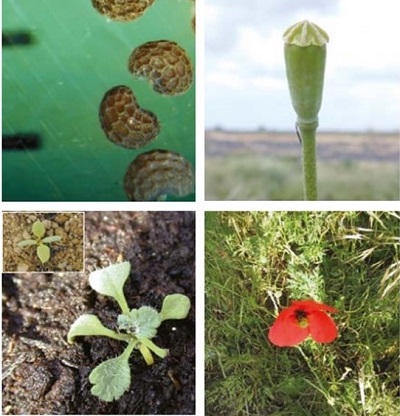- Home
- Knowledge library
- Distribution and biology of long-headed poppy in the UK
Distribution and biology of long-headed poppy in the UK
Long-headed poppy occurs less frequently than the common poppy, but it is relatively competitive in winter oilseed rape. Find out how to identify and control this broad-leaved weed.
Overview
Long-headed poppy (Papaver dubium) occurs as a cereal weed, though it is less frequent on arable land than common poppy. The plants reproduce entirely by seed; autumn-germinating plants can overwinter. The small green seed heads can block combine sieves at harvest and the seeds can contaminate oilseed rape seed samples.
- It is particularly competitive in winter oilseed rape
Description
It is an upright, annual 30–60 cm tall. The stems are hairy at the base with the hairs parallel to the stem. The leaves at the base form a rosette of divided segments. The broken stem bleeds a white sap. The large flowers have four red petals without blotches. The seedhead is long.
Key features
Fruit: The seedhead is long and smooth.

Location and life cycle

Geographic distribution
Long-headed poppy is a lowland plant found in arable fields, wastelands and gardens. It is now largely restricted to the chalk of southern England, though it does occur on outlying sites in Norfolk, Northamptonshire and Cornwall.
Soil type
It is found on light or heavy chalky soils.
Seed statistics
- Seed longevity: >5 years
- Seed weight: 0.1 mg
- Seeds/flower: 2,000
- Seeds/plant: 18,000
Management
For advice on herbicides, please speak with your agronomist or adviser.
When was this information last updated?
This page is based on content from the encyclopaedia of arable weeds publication. Since it was first released in 2008, the publication has been redesigned several times but not revised. However, it remains a good foundation for general information on the distribution and biology of weeds.

